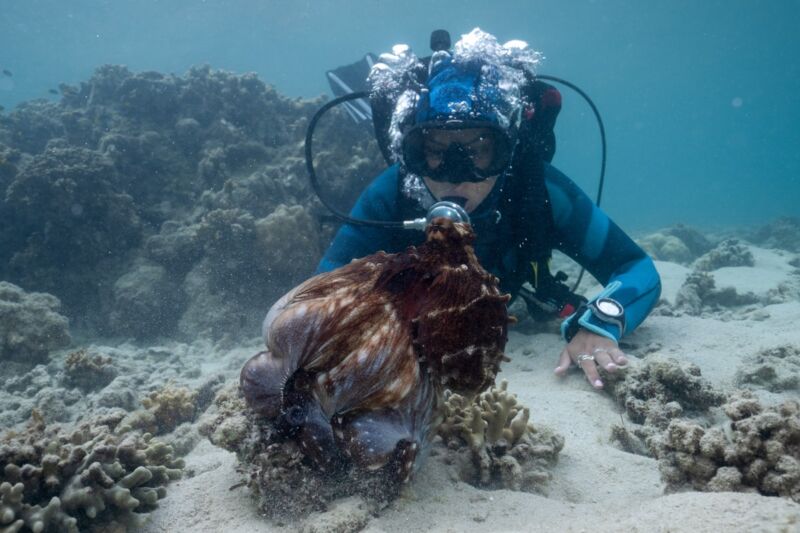-
 chevron_right
chevron_right
Secrets of the Octopus takes us inside the world of these “aliens on Earth”
news.movim.eu / ArsTechnica · 4 days ago - 18:26 · 1 minute

Enlarge / A Day octopus ( Octopus cyanea ) named Scarlet parachutes her web over a coral head while Dr. Alex Schnell observes. (credit: National Geographic/Disney/Craig Parry)
With Earth Day fast approaching once again, it's time for another new documentary from National Geographic and Disney+: Secrets of the Octopus . It's the third in what has become a series, starting with the remarkable 2021 documentary Secrets of the Whales (narrated by Sigourney Weaver) and 2023's Secrets of the Elephants (Natalie Portman as narrator). James Cameron served as producer on all three.
Secrets of the Octopus is narrated by Paul Rudd. Per the official synopsis:
Octopuses are like aliens on Earth: three hearts, blue blood and the ability to squeeze through a space the size of their eyeballs. But there is so much more to these weird and wonderful animals. Intelligent enough to use tools or transform their bodies to mimic other animals and even communicate with different species, the secrets of the octopus are more extraordinary than we ever imagined.
Each of the three episodes focuses on a specific unique feature of these fascinating creatures: "Shapeshifters," "Masterminds," and "Social Networks." The animals were filmed in their natural habitats over 200 days and all that stunning footage is accompanied by thoughtful commentary by featured scientists. One of those scientists is Dr. Alex Schnell , a native Australian and self described storytelling who has worked at Macquarie University, the University of Cambridge, and the Marine Biological Laboratory, among other institutions. Her research focuses on the intelligence of marine animals, particularly cuttlefish and octopuses.





